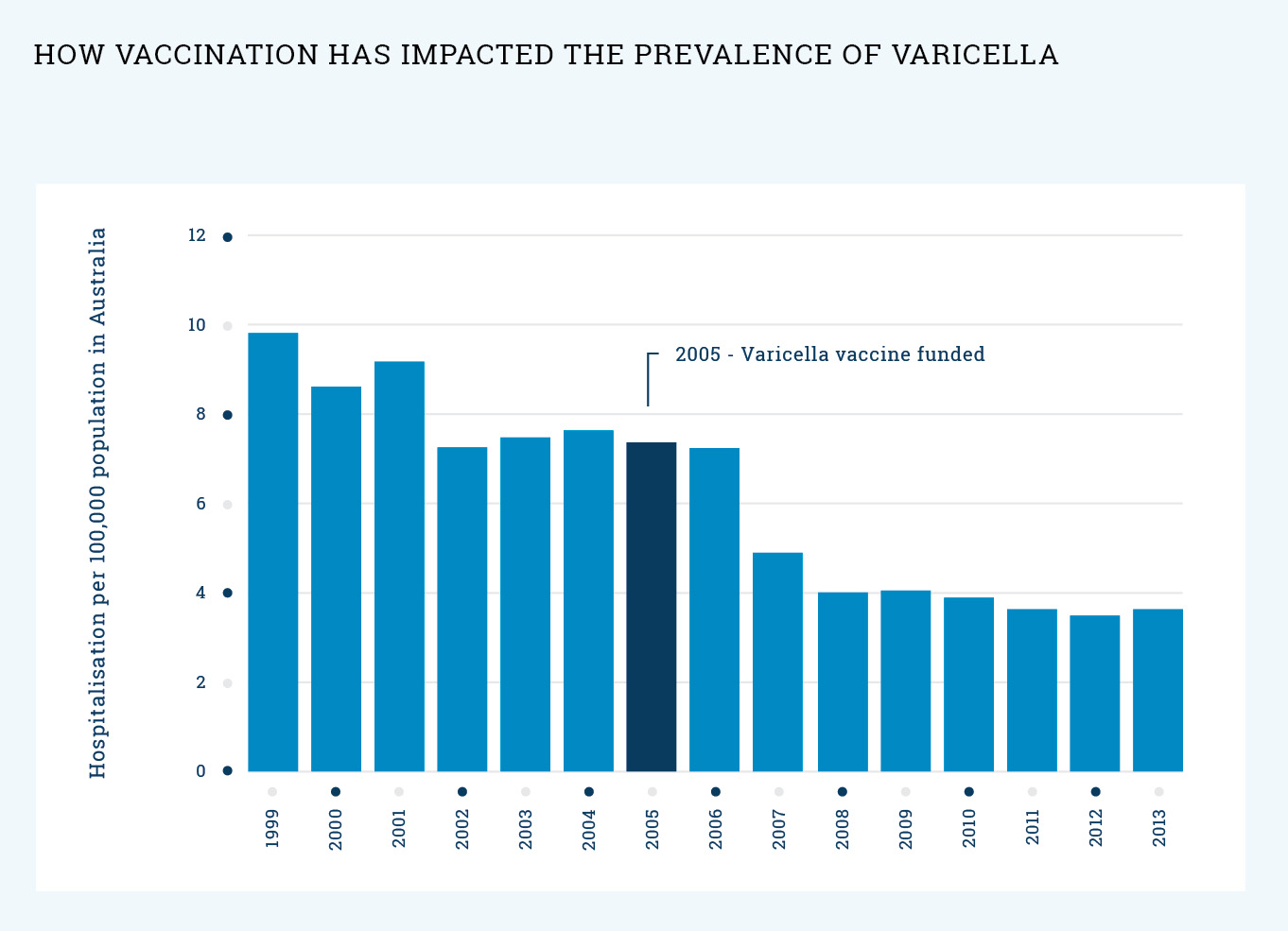Varicella
Key facts
-
Varicella is usually called chickenpox. It is a virus that spreads easily from person to person like a cold or flu. It causes fever and itchy red spots that become blisters.
-
The condition is usually mild for children but can be very serious for adults, especially pregnant women and their babies.
-
A combination vaccine (MMRV) is the best way to protect your child from varicella (chickenpox).
On this page
- What is varicella (chickenpox)?
- What will happen to my child if they catch varicella (chickenpox)?
- What vaccine will protect my child against varicella (chickenpox)?
- When should my child be vaccinated?
- How does the varicella (chickenpox) vaccine work?
- How effective is the vaccine?
- Will my child catch varicella (chickenpox) from the vaccine?
- What are the common reactions to the vaccine?
- Are there any rare and/or serious side effects to the vaccine?
- What impact has vaccination had on the prevalence of varicella (chickenpox)?
